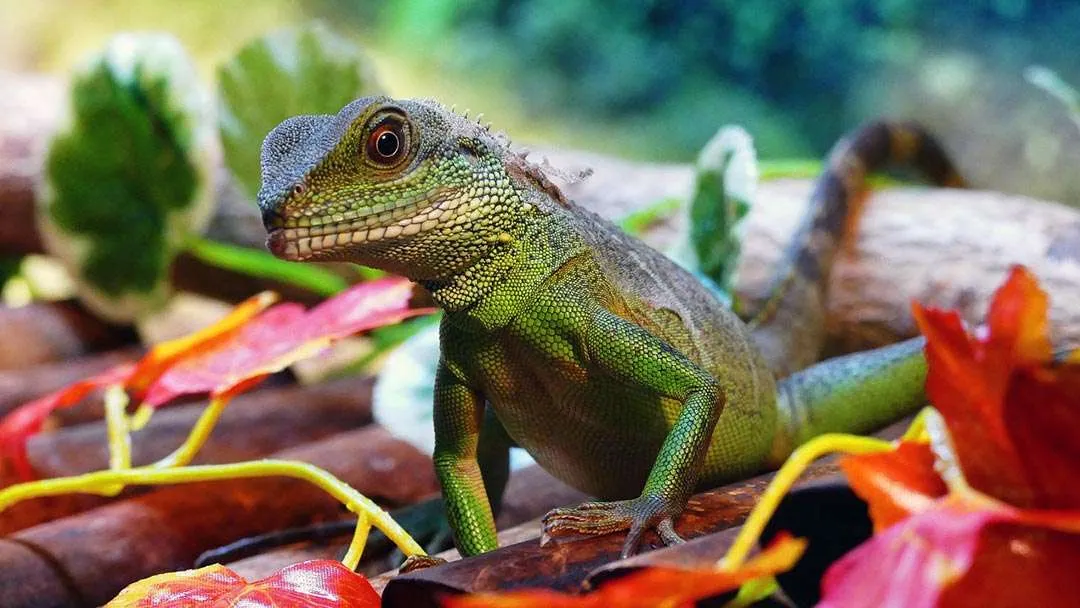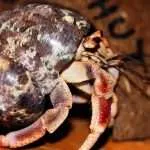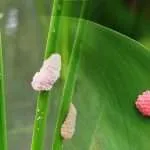Are you thinking about a Chinese Water Dragon Habitat? or you just need some information about keeping your water dragon in good shape through proper diet and general care requirements? You are at the right place.
Before we dive deeper into creating the right habitat and diet information about the Chinese water dragon; let’s go over some rudimentary stuff about the Chinese water dragon.
Allow me to educate you on something you’ve (probably) never heard before or you’ve come across but have very little understanding of it.
Origin of Water Dragons
From the name, Chinese Water Dragon, you can deduce that this animal is from China, it’s found in water and it’s a dragon.
Well, you’re almost right but not completely right about your deduction.
The first thing you should know is this, the Chinese Water Dragon is not a dragon in the way the name suggests but a beautiful and exotic lizard in the real sense.
The Chinese Water Dragon – also known by its other names Thai Water Dragon, Asian Water Dragon, and Green Water Dragon – is found mostly in China and India. It is a native of East and Southeast Asia.
You find this reptile in lowlands, highland forests, and freshwater environments. This is why it is semi-arboreal (spending half of their time in trees) and semi-aquatic (spending the other half in water) reptile.
The Chinese Water Dragon’s closest relative is the Australian Water Dragon as there are no other recognized subspecies. It belongs to the agamid lizard species.
Still curious to know more about this reptile, here are some things I found out about the Chinese Water Dragon.
Chinese Water Dragon Habitat
The habitat of a Chinese Water Dragon requires a lot of resources because it has to be built just like you will build your own house.
Raising a Chinese Water Dragon as a pet requires a habitat where it can live and thrive. The habitat must be built to resemble its natural habitat – it must have terrestrial and aquatic features. Remember this is what its natural habitat looks like.
The reason why habitat is required is that the animal cannot be left to stray around your house. It’s not a dragon in the way the name suggests but a lizard in the real sense (you know this by now). If it’s left to stray around, you can lose it or something or someone can cause damage to the lizard which can ultimately lead to its death.
Chinese Water Dragon Habitat Dimensions:
In building a Chinese water dragon habitat, it must be a large one with a minimum size of 75 gallons (285 liters), at least 4 feet (1.22 meter) in length and 5 to 6 feet (1.5 – 1.8 meter) tall. This is a minimum size tank, you can do a bigger one if you desire to.
Since the habitat you’ll build will be terrestrial and aquatic in nature, you’ll need the following building materials:
Substrate –
This is what makes up the flooring of the tank and it’s important because it looks like the natural floor or sand that its natural habitat is made up of. Also, it helps maintain appropriate humidity levels.
To create substrate, there are different options you can choose from including but not limited to wood chippings/shavings, mulch, moistened coconut fiber.
Branches –
They are needed for the purpose of climbing – the dragon loves to climb in plants and trees. You need to add branches – artificial or living plants – rock caves to aid the dragons’ climbing.
Light –
Who doesn’t need light in his/ her home? No one, that’s the answer. The Chinese Water Dragon also needs light in its tank.
Sufficient light exposure allows the animal to maintain body heat. When building, a UVB light should be installed.
The light installation should be about 10 to 12 inches above the basking surface with no obstruction to the heat.
The basking surface should be kept at 90 degrees Fahrenheit. The light should be replaced every 9 to 12 months. The dragon likes its habitat hot not cold, hence, the essence of the light.
Water –
Water is life, as such, you can make provision for a small pool inside the tank.
The purpose of water in the tank is because the Chinese Water Dragon is a semi-aquatic/semi-arboreal animal and needs a pool to jump into every once in a while.
The pool is not necessary because the Chinese Water Dragon spends most of its time climbing – above the ground.
The pool is only a place they occasionally dive into to swim or when they feel threatened.
Extra Notes on Your Chinese Water Dragon Habitat Placement:

All building materials must be clean and safe for the building of a habitat. If they are unsafe, it poses a threat to the dragon – contracting infection or disease.
The location of the tank is important. You cannot build a Chinese water dragon habitat and keep it anywhere – you must be intentional about where the location is.
Even in an enclosure, the dragon is still not 100% safe from danger.
Word of Advise
You need to keep the tank in a place where you can monitor the activities of the dragon and safe from other predators.
Let’s say you keep other pet(s) in the house, if the location of the tank is within their reach, the dragon might end up in the belly of the other pet(s) or badly injured.
In my opinion, you can keep the tank in a place where you or your guests can marvel at it because of the range of colors it possesses. It’s a beautiful creature.
As the dragon grows, you’ll need to change the enclosure from a horizontal one to a vertical one.
Lastly, if getting the building materials by yourself seem difficult, you can walk into a pet store to get the necessary materials or tell them to build one for you.
Diet of a Chinese Water Dragon
The Chinese Water Dragon loves to eat meat but will also eat vegetables and fruits- only when you feed it. They are omnivores in nature.
Earthworms, crickets, locusts, grasshoppers and wax worms are its favorite meals for a daily diet.
But you’ve got to spice up its diet with fruits and vegetables such as carrots, cantaloupe, figs, and blueberries.
At first, the dragon might throw a tantrum by rejecting the veggies and fruits, but over time, it will adapt to it.
Basically, the diet plan of a Chinese Water Dragon should look like this, 85 to 90% insects and 10 to 15% of fruits and vegetables.
Also, you’ll need to provide a lot of clean drinking water for a balanced diet.
Extra Notes:
Each Chinese Water Dragons’ diet varies from each other. This means a diet plan or record should be available for guidance.
Depending on the age of the dragon, there should be feeding time and frequency – meaning when to feed the dragon and how much to feed the dragon.
As a rule, younger dragons should be fed more frequently than adults.
Just as you care about your weight – I hope you do – the dragons’ weight should also be checked.
This means the dragon must not be overfed which ultimately leads to overweight. Little portions of food with appropriate timing.
A most important factor in the diet of the Chinese Water Dragon is buying or getting food from a healthy source.
Buy food – feeder insects – from pet stores and also, wash vegetables and fruits thoroughly before feeding the dragon.
7 Fascinating facts about the Chinese Water Dragon

Do I still have your attention, if yes, keep reading to know some interesting facts about the Chinese Water Dragon?
#1: Lifespan
The Chinese Water Dragon when properly taken care of can live up to two decades – 20 years. The lifespan basically, is between 10 to 15 years.
#2: The tail is the longest part of its body
The Chinese Water Dragon can grow up to 3 feet i.e 1 meter for a male and 2 feet (.6m) for a female. Of its total body – head, belly, and tail – the tail is the most prominent feature of the dragon because of its length.
The tail of a Chinese Water Dragon makes up about 70% of its entire body. The tail’s color is usually dark green or dark brown.
The tail of the Chinese Water Dragon is also used as a weapon of defense. When the dragon feels threatened, it either dives straight into water where it submerges itself until the coast is clear or it whips you with its tail.
Overall, the tail is longer than the dragons’ entire body.
#3: They are diurnal in nature
Just like humans, the Chinese Water Dragon is diurnal and not nocturnal in nature. This means, the dragon is very active during the day and sleep at night. They are not like nocturnal reptiles – like some species of snakes and bats – that naps all through the day and gets active at night.
#4: They have unique colors
The Chinese Water Dragon is a colorful reptile with different colors decorating its body. The head of the dragon, which is triangular in shape, is colored between light green and dark green while the tail is usually dark green or dark brown in color.
The throat of the dragon, which is considered its most attractive feature, is colored in orange or yellow while the belly is white, pale yellow or pale green.
Other creatures change the color of their skin example is Chameleon, but the Chinese Water Dragon doesn’t change color.
#5: The Chinese Water Dragon has a third eye
You may not find this fascinating but it is. The Chinese Water Dragon has a third eye which doesn’t look like an eye because it’s located somewhere at the back of its neck.
The third eye is called the pineal eye and it helps them with regulating body temperature by sensing different lights.
This feature of the dragon is also used in detecting predators – which are mostly birds.
When they sense predators – danger – they submerge themselves into the water to stay away from the predator.
#6: They catch diseases just like every other creature
The Chinese Water Dragon can catch infections which can lead to disease or disorder that can ultimately shorten their lifespan – when not treated or ignored for a long period of time.
Some of the health issues associated with the Chinese Water Dragon includes mouth rot, Metabolic Bone Disease, skin infection, parasites, and infections.
Of all these health issues listed above, the most fatal one is the Metabolic Bone Disease also known as MBD which is caused by a lack of calcium in the dragons’ diet.
The only means to prevent MBD is by adding calcium powder to the dragons’ meal at least three times a week. A vet is the only one who can treat the dragon when suffering from MBD.
Other Health Problems
Other health problems stem from infection, dirty habitat, a tiny or small enclosure.
All these can be prevented just by making sure everything and anything that you use or give to the dragon is clean and also maintaining a clean habitat.
Some of the signs your dragon will show you if it’s contracted a disease or infection includes lethargy, loose stool, fractured bones, low appetite, open ulcers around the nose or mouth, swelling around the mouth, twitching, and swelling of the backs or legs.
I might not have exhausted all signs to look out for, but, if you pay proper attention to the welfare of the dragon, you’ll notice when something is out of place.
And the first and best place to go is to the vet office for confirmation or treatment.
#7: Supplements? Yep.
The Chinese Water Dragon can develop a disease called Metabolic Bone Disease (MBD) which stems from a lack of Calcium.
To avoid this, the dragon needs supplements – calcium most importantly. At least twice or thrice in a week, add calcium powder over the dragons’ meal so as to fight against MBD.
What did I Miss?
The Chinese Water Dragon can be territorial, especially the male species.
As such, it’s not advisable to put two male dragons together in the same enclosure.
This might lead to bullying between both of them which can lead to the loss of one of them. You can, however, put two females together.
Egg Binding Problem
Female Chinese Water Dragon suffers from dystocia also known as egg binding. A female water dragon can lay eggs without mating, which may sometimes lead to dystocia.
Dystocia is when the female dragon is unable to pass out eggs from her stomach.
When you notice your dragon frantically digging to pass out eggs, she’s suffering from egg binding.
To prevent this, an egg-laying box should be put in place inside the cage.
The Chinese Water Dragons are very friendly and can be adopted as a pet. When adopting one, it’s important you ask for a captive-bred lizard rather than a wild-caught lizard.
The reason for this is because wild-caught are imported lizards and may find it difficult to adapt to enclosures.
Also, this is to avoid infections that you can catch from the dragon.
So, there you have it – some quick facts on the Chinese Water Dragon. Still curious, adopt a Chinese Water Dragon to know more.







